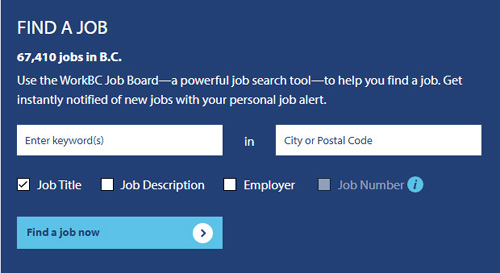
Monday February 7, 2022 | VICTORIA, BC
by Mary P Brooke | Island Social Trends
Of the one million job openings expected to emerge in BC over the next 10 years, about 80 percent will require at least some post-secondary education or training, as shown in B.C.’s latest Labour Market Outlook (LMO) forecasts.
That news was presented today online were Anne Kang, Minister of Advanced Education and Skills Training and Ravi Kahlon, Minister of Jobs, Economic Recovery and Innovation.
There will be opportunities for students and job seekers to develop their skills and find rewarding jobs of the future, said Kang and Kahlon today. Higher-opportunity career paths will benefit workers, the overall economy and offer a higher standard of living.
“There will be huge opportunities in the care economies,” said Kahlon. “If this is a career you choose, we will be there 100 percent to support you,” he said with great enthusiasm today. Today it was mentioned that respiratory technologist training is being fast-tracked, with people able to “earn while they learn”.
Emerging into pandemic recovery:
As BC comes of out of the pandemic economic impacts, it’s important for people to up-skill, it was emphasized in today’s presentation. The government is making available more seats in education for high-opportunity jobs.
The LMO is a 10-year forecast that helps governments and businesses guide resources to support the future workforce. It is intended to give British Columbians up-to-date information so they can make decisions about their future career paths.
Minister Kahlon hopes to see BC nurture the skills and talents of British Columbians, including through building high-skill, high-care types of job opportunities. He said that BC government investments in housing, child care and infrastructure will go along with that.
Minister Kang says BC aims to make educational opportunities “affordable, available and relevant to everyone”.
“We’re working to break down barriers and expand affordable post-secondary and skills training opportunities, says Kang. “Our government remains committed to supporting people and communities now and into the future. Despite the challenges of the past two years, there are new opportunities ahead for people looking for good-paying careers.”
Interactive career transition tool:
A new interactive career transition tool is available in multiple languages at WorkBC.ca .
Using this and other accessible online resources, students and jobseekers can find in-demand jobs, employers can be guided in their business planning and educators can ensure programs provide British Columbians with the skills to succeed in the province’s growing economy.
The website includes the ability to search for jobs by region. You can sign up to get instant notifications of new jobs in line with your own job-search parameters.
Here is the link to the WorkBC Career Search Tool.
Building new skills & knowledge:
B.C.’s workforce will be required to build new skills and knowledge to keep pace with the 1,004,000 job openings forecast through to 2031. Of this total, 63% will replace people who are leaving the workforce permanently, such as retirees. The remaining 37% will be new jobs created by economic growth and COVID-19 pandemic recovery.
“B.C. continues to lead Canada’s economic recovery with more than 100,000 jobs added in 2021,” said Ravi Kahlon, Minister of Jobs, Economic Recovery and Innovation. “I’ve heard from business leaders, First Nations, labour groups and non-profits throughout the province that B.C.’s competitive advantage is its people. That’s why our upcoming economic plan will put forward a generational commitment to attract, develop and retain talent to support the jobs of the future. By continuing to invest in people, we will build a stronger, more inclusive workforce and prepare British Columbians to compete on a global stage.”
The largest number of job openings are expected in the health-care, social assistance and education industries. Many of these openings will provide services such as early childhood education, counselling, child protection and community housing and food services. Science and technology jobs will also be in high demand with 111,000 job openings projected and 85,000 job openings expected in skilled trades, which will offer careers ranging from cooks and automotive service technicians to construction workers and hairstylists.
Expanded access:
Over the past four years, the Province has steadily expanded access to post-secondary training in several high-opportunity occupations, including the addition of:

* 2,900 tech-related spaces, set to produce approximately 1,000 additional tech graduates each year by 2023;
* 500 new nursing seats, building on approximately 2,000 seats in nursing programs at public post-secondary institutions;
* 1,150 new early childhood educator seats (ECE), adding to approximately 1,800 seats in ECE programs at public post-secondary institutions; and
* 27,000 more apprenticeship and foundation training seats this year at public and non-public institutions.
$2.7 billion in funding over six years:
Since 2018, B.C. has secured more than $2.7 billion in skills training funding over six years to help tens of thousands of British Columbians gain employment skills through workforce-development agreements with the federal government.
These programs are aimed at people of all ages and stages of life including young adults, young adults at risk, survivors of violence or abuse, older workers, individuals who face multiple barriers to employment and Indigenous Peoples.
BC is aiming to foster a “lifelong learning culture”, Minister Kang said today.
===== Quick Facts:
- B.C. added more than 100,000 jobs throughout the province in 2021, and B.C.’s unemployment rate stands at 5.3%.
- Five industries will account for approximately half of all projected job openings, including health care and social assistance; professional, scientific and technical services; retail trade; construction; and accommodation and food services.
- The tech sector continues to see rapid growth. For example, since the 2019 LMO, the computer systems design sector grew 39% in B.C. and is expected to grow at an average annual rate of 4.8% over the next 10 years.
- People 29 or younger entering the workforce for the first time will be the largest source of B.C.’s new labour supply. They will fill approximately 48,000 job openings or 48% of the total job openings each year for the next 10 years.
- New immigrants will fill 34%, while workers coming from other parts of Canada will fill 8% of the jobs.
===== LINKS (provided by government):
2021 edition of the B.C. LMO, the LMO Online Dashboard and other links: http://workbc.ca/labourmarketoutlook
Career Transition Tool: https://www.workbc.ca/careertransitiontool/
Career Search Tool: https://www.workbc.ca/careersearchtool/
Career Education Resources for Teachers and Counsellors: https://careereducation.workbc.ca/
Forecast data for all 500 occupations, industries and regions: https://catalogue.data.gov.bc.ca/dataset/labour-market-outlook
Broader look at employment, hiring and training opportunities: https://www.workbc.ca/
===== BACKGROUNDER
The BC Government has issued a backgrounder called “Plan for the future with the new B.C. Labour Market Outlook”:
How is the Labour Market Outlook (LMO) produced?
- The LMO uses the most current data from various sources, including BC Stats, the B.C. Ministry of Finance, Statistics Canada and other federal departments.
- An economic modelling system analyzes the data collected and other factors affecting labour market supply and demand. Data is reviewed based on industry, occupation, geographic region and skills.
- The LMO produces a list of high-opportunity occupations by assigning indicators for expected job opportunities, expected labour market tightness, current labour market tightness and wage rate.
- These indicators are assigned a weight based on their effect on labour-market conditions.
- Projections are tested with employers, unions, industry groups and post-secondary institutions.
Which industries will have the most job openings?
There will be job openings across various industries throughout the province.
The 10 industry groups with the most job openings over the next decade, ranked in order of most to least, are as follows:
- health care and social assistance
- professional, scientific and technical services
- retail trade
- construction
- accommodation and food services
- transportation and warehousing
- educational services
- information, culture and recreation
- finance, insurance and real estate
- manufacturing
Which regions of B.C. will have the most jobs?
Thousands of jobs are expected in every region of B.C.
The regions with the largest number of job openings are the Mainland/Southwest (65%) and Vancouver Island/Coast (16%).
The job openings are distributed between regions as follows:
- Mainland/Southwest: 653,200 job openings
- Vancouver Island/Coast: 161,500 job openings
- Thompson-Okanagan: 115,600 job openings
- Kootenay: 25,400 job openings
- Cariboo: 20,400 job openings
- North Coast and Nechako: 15,200 job openings
- Northeast: 12,300 job openings
What occupations will have high opportunities?
The LMO produces a list of high-opportunity occupations, broken down by education and training requirements.
These occupations are considered the best job opportunities for British Columbians within the next decade.
The top three occupations by job openings in each category are:
degree:
- registered nurses and registered psychiatric nurses
- information systems analysts and consultants
- computer programmers and interactive media developers
diploma/certificate, excluding apprenticeship:
- retail and wholesale trade managers
- administrative officers
- nurse aides, orderlies and patient service associates
apprenticeship certificate:
- automotive service technicians, truck and bus mechanics and mechanical repairers
- contractors and supervisors, heavy-equipment operator crews
- aircraft mechanics and aircraft inspectors
high school and/or occupation-specific training:
- retail sales supervisors
- restaurant and food service managers
- longshore workers








